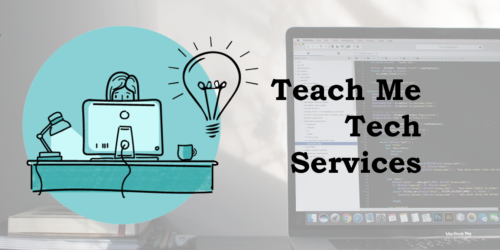Videos to Teach and Talk About AI
The videos below have been selected for recency (a few years old or less), length (about 10 minutes or less), and clarity and simplicity. Please note that AI technology is advancing rapidly, and the accuracy of the information provided may change over time. Additionally, not all content may be directly relevant or applicable to the Conestoga context.
Know a video that should be added to this curated list? Share it with Teaching and Learning!
What is AI
Burns, E. (2024). Module 1: B. CLEAR Framework for Prompting
This video [6:54] introduces the CLEAR Framework, developed by Dr. Leo Lo, to help users craft more effective prompts for generative AI tools by focusing on clarity, context, and iteration.
Common Sense Education (2023, September 22). What is AI?
This video [2:37] explains AI in simple terms using relatable examples like robot dogs and creative bots, while also cautioning viewers about generative AI’s limitations and the need for responsible use.
KI-Campus (2024). Generative AI explained in 2 minutes
This video [2:02] defines generative AI, outlines its capabilities (like creating text, images, and music), and highlights both its potential and risks, such as deepfakes and hallucinations.
Lamb, M. (2024). The TRUTH About ChatGPT: How Large Language Models Really Work.
This video [5:37] explains how LLMs use statistics and improvements in technology over time in order to explain their capabilities and ease of access.
Minecraft Education (2024, September). AI 101: Building the Basics.
This animated video [2:15] introduces young learners to the fundamentals of AI, including how it works and how to use it responsibly, as part of the broader AI Foundations curriculum from Minecraft Education.
Downsides of AI
Luccioni, S. (2023, November 6). AI Is Dangerous, but Not for the Reasons You Think | Sasha Luccioni …
AI ethics researcher Sasha Luccioni in this video [10:18] argues that the real dangers of AI lie in its current environmental impact, copyright violations, and algorithmic bias—not hypothetical future threats. She introduces tools like CodeCarbon and Stable Bias Explorer to help mitigate these issues.
Pluralsight. (2023). When ChatGPT is confidently wrong. Youtube.
This video [7:43] describes and shows what happens when and why AI produces wrong outputs in ways that seem confident or plausible.
UMainDigCuration (2023). AI IMPACT RISK: an acronym to remember generative AI downsides.
This video [7:15] provides a summary of the IMPACT risk acronym that describes various downsides of artificial intelligence. See also the associated website downloads.
Racism in AI
Emancipation Media. (2024, August). AI, Racial Bias In Black Education. YouTube.
This video [5:33] highlights how AI technologies are being used in ways that perpetuate racial bias in educational settings, particularly affecting Black students. Indicates that bias in AI algorithms is growing in scope because it is based on past data and on the biases of the human designers.
Let’s Try AI. (2024, July 20). Is AI Racist? Understanding How AI Reflects and Amplifies Bias. YouTube.
This video [2:45] explores how AI systems can reflect and amplify societal biases, particularly racial ones. It discusses real-world examples such as biased facial recognition and hiring algorithms, and it describes how AI bias is perpetuated.
Bias in AI
Texas McCoombs School of Business. (n.d.). Algorithmic Bias | Ethics Defined. YouTube. University of Texas at Austin.
This video [5:00] defines algorithmic bias and explains how it arises from biased data or flawed design (“garbage-in, garbage-out”). It uses examples related to bias in hiring processes, law enforcement, medical procedures, and facial recognition software. It discusses the ethical implications of making assumptions about AI fairness and transparency. It also suggests ways to promote algorithmic justice.
UCLA Institute for Technology, Law, and Policy. (2023). AI & Bias – So What’s the Solution?. YouTube.
This video [4:48] explains how AI systems can inherit and amplify human biases, particularly in areas like hiring and law enforcement. It introduces the concept of algorithmic bias and suggests ways to mitigate it. This video is useful for drawing attention to how AI is made and the ways that it can reflect and detect bias.
Gender Bias in AI
The Alan Turing Institute. (2023, January 3). Timeline of Gender Bias in AI. YouTube.
This video [3:58] explains how gender inequalities are reproduced and amplified by AI development.
UNESCO. (2021). Episode 7 AI and Gender. YouTube.
This video [1:14] from UNESCO discusses how AI systems often reinforce gender stereotypes. It focuses on the effectiveness of the predominance of male designers and female assistants. It calls for more inclusive and equitable AI development.
Environmental Impact and AI
CBC News: The National. (2024, February 13). Breaking down the climate impact of AI. YouTube.
This news segment [5:06] discusses the carbon footprint of “fun and harmless” AI. It emphasizes avoiding thinking of AI as costless: data centres use electricity and create heat, especially as more and larger models develop. It also highlights its potential to aid climate efforts (improving efficiency, predicting natural disasters, and optimizing agriculture processes).
Financial Times. (2023, August 3). AI can be a climate warrior, but what about its carbon footprint?. YouTube.
This video [3:12] explores AI’s dual role in climate change: as a tool for analyzing weather and energy data and optimizing processes. It focuses on how Google, IBM, Amazon, and the US Government are using AI in their own processes to help their business by highlighting inefficiencies. It also highlights public data analysis and the carbon footprint of AI.
Ethics and AI
Responsible Use and AI (2025). Ethics in AI with Professor Anna Marbut. University of San Francisco.
Explains the term AI ethics: how is data collected, fed, and trained; AI as a product – how is it used by the end consumer; AI ethics – should we treat it as a human, how will it affect human life? She talks about the balance of opportunities and drawbacks. It also describes the resources developed: everyone is using pre-trained models. It also focuses on regulations and guidelines, but limited legislation. It gives some suggestions for regulations and reflections on use.
Scottish AI Alliance (2023, June 14). How can AI be Trustworthy, Ethical & Inclusive.
This video [1:21] highlights the importance of how AI technology is developed in order to reflect the values that society cares about.
Strategies for Using AI
Bloomreach (2024, November). Double Check Your AI Writing Outputs. Youtube.
This video features Emmy-nominated speaker Baratunde Thurston sharing a personal story that underscores the importance of reviewing AI-generated content to ensure it aligns with your intent and values, especially in commercial contexts like e-commerce.
Do That Dave (2025, January 16). How Can You Verify the Outputs of Large Language Models? Youtube.
This video explores practical strategies for verifying the accuracy and reliability of outputs from large language models, emphasizing critical thinking and awareness of AI limitations.
Minecraft Education (2024, September). Using AI Responsibly. Youtube.
Part of the AI Foundations series, this video teaches students and educators how to use AI tools ethically and safely through an animated lesson.






